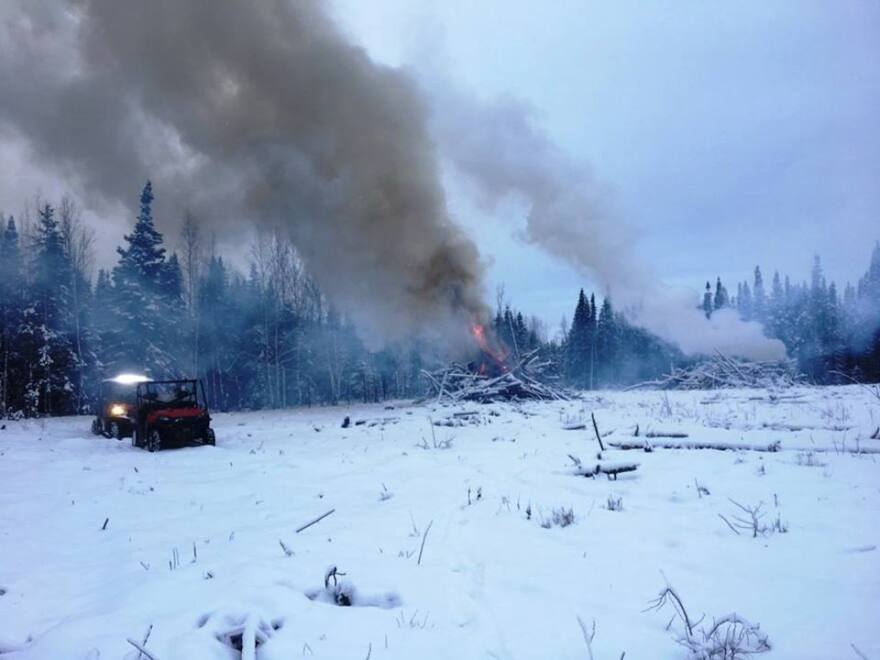Despite all the snow still on the ground and in the forecast, it won’t be long before attention turns to fire season.
Winter and fire go better together than you might expect. The frozen ground gives crews at the Kenai National Wildlife Refuge a good opportunity to do preventative work that will help later on during the height of fire season. Near Sterling, which has dealt with wildland fires three of the past four years, a big fire break project is just coming to a close, says Mike Hill, assistant fire management officer at the Refuge.
“It is a total of 8.5 miles. It goes from the Refuge boundary where it intersects with the Sterling highway, just past Three Johns road. It goes north for about 2.5 miles, turns and follows the Refuge boundary and goes west for six miles and almost intersects with Swanson River road. That has been our big focus this winter.”
Hill says that area offers a unique opportunity for monitoring and studying what happens when you clear out a big fire break and how that affects not only future fire behavior, but the immediate environment.
“(It’s) kind of uncharted territory, too. Nobody, including Canada and the Lower 48, has done a real in depth monitoring system of masticated fuels treatments. That’s what we’re setting out to do. It’s pretty labor intensive. It’s also pretty fun.”
That fuel break has also offered snow machiners some fun this winter. And while it’s been a decent snow year on the Refuge and across the Peninsula, that doesn’t tell us much about what the upcoming season might bring.
“Somebody said to me one time the only people who predict fire seasons are rookies and fools," Hill said. "But in all seriousness, we do have a predictive services element to our decision making process, and they do look at large scale weather pattern influences like La Nina and El Nino, snowpack. The snowpack helps with the midsummer fire season a lot because it really helps with soil moisture and duff moisture.”
But the risk is still there early on, when uncovered, dry grass has yet to green up. Another potential problem fuel that they’re keeping an eye out for on the Refuge is beetle kill spruce. Hill says they’re seeing a bit more of it in the northern reaches of the Refuge, but that doesn’t necessarily mean an increased fire hazard.
“The reality is that yes, it does not help the situation. But it isn’t as big a factor as we initially had thought.”
That’s based on what’s now known about previous fires in the Caribou Hills and going back to the mid-90’s when a lot of beetle kill was consumed by fire. Hill says the bigger risk is often public safety, where weakened and dead trees can pose a risk of falling at campgrounds or onto roads.
That topic, along with many others, will be discussed this week when a number of partnering agencies like Division of Forestry and Cook Inlet Region, Incorporated will convene for the All Lands All Hands program to make more plans for the upcoming fire season.

